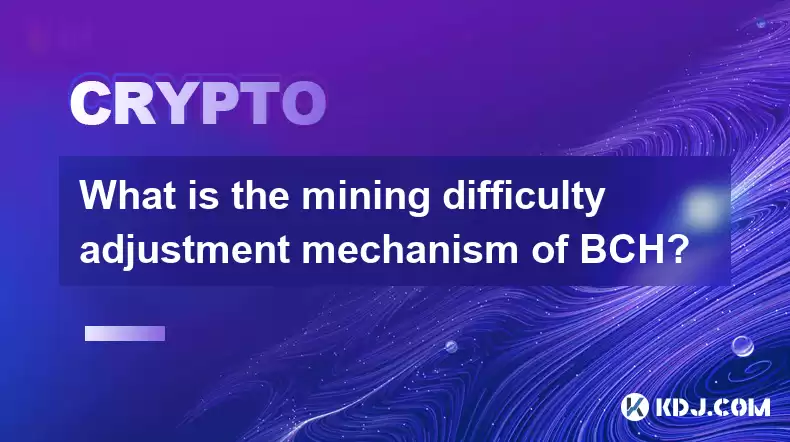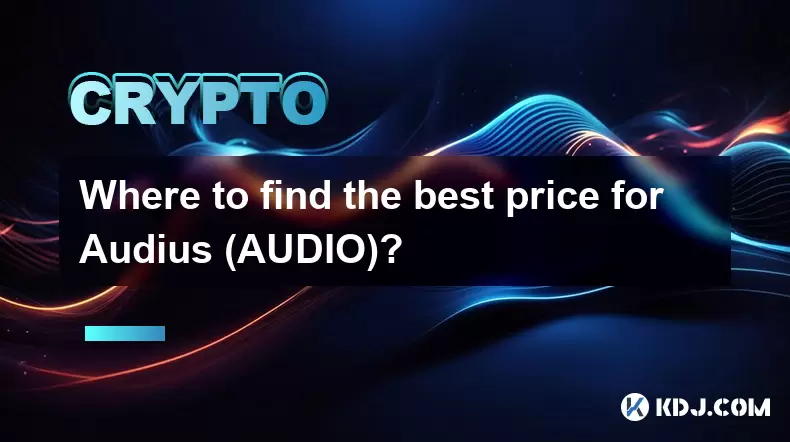-
 Bitcoin
Bitcoin $118900
-2.33% -
 Ethereum
Ethereum $4288
-0.13% -
 XRP
XRP $3.151
-3.21% -
 Tether USDt
Tether USDt $1.000
0.02% -
 BNB
BNB $809.5
-1.17% -
 Solana
Solana $175.7
-4.75% -
 USDC
USDC $0.0000
0.01% -
 Dogecoin
Dogecoin $0.2246
-5.75% -
 TRON
TRON $0.3473
2.19% -
 Cardano
Cardano $0.7809
-5.18% -
 Chainlink
Chainlink $21.38
-3.48% -
 Hyperliquid
Hyperliquid $43.29
-5.53% -
 Stellar
Stellar $0.4375
-3.21% -
 Sui
Sui $3.685
-6.68% -
 Bitcoin Cash
Bitcoin Cash $595.2
3.50% -
 Hedera
Hedera $0.2483
-6.60% -
 Ethena USDe
Ethena USDe $1.001
-0.01% -
 Avalanche
Avalanche $23.03
-5.28% -
 Litecoin
Litecoin $119.5
-5.02% -
 Toncoin
Toncoin $3.395
-0.07% -
 UNUS SED LEO
UNUS SED LEO $9.007
-1.19% -
 Shiba Inu
Shiba Inu $0.00001304
-5.44% -
 Uniswap
Uniswap $11.35
1.57% -
 Polkadot
Polkadot $3.898
-5.43% -
 Cronos
Cronos $0.1671
-0.16% -
 Ethena
Ethena $0.8121
-2.45% -
 Dai
Dai $1.000
0.02% -
 Bitget Token
Bitget Token $4.412
-1.73% -
 Monero
Monero $264.0
-0.64% -
 Pepe
Pepe $0.00001128
-8.12%
What is the mining difficulty adjustment mechanism of BCH?
BCH's difficulty adjusts every two weeks (2016 blocks), aiming for a 10-minute block time. Unlike Bitcoin's, its simpler algorithm offers quicker responsiveness to hashrate changes, impacting miner profitability and network stability.
Mar 11, 2025 at 04:10 am

Key Points:
- BCH's difficulty adjustment mechanism aims to maintain a consistent block generation time, approximately 10 minutes.
- It uses a different algorithm than Bitcoin's, employing a simpler and potentially more responsive approach.
- The adjustment is based on the average time taken to mine blocks over a specific period.
- Difficulty is adjusted every two weeks (2016 blocks), a shorter timeframe than Bitcoin's.
- This mechanism is crucial for network stability and prevents extreme fluctuations in mining profitability.
What is the mining difficulty adjustment mechanism of BCH?
Bitcoin Cash (BCH) employs a difficulty adjustment mechanism designed to regulate the rate at which new blocks are added to its blockchain. This mechanism is crucial for maintaining the network's stability and preventing situations where blocks are generated too quickly or too slowly. Unlike Bitcoin's more complex algorithm, BCH utilizes a simpler, arguably more responsive approach. The primary goal is to maintain an average block generation time of approximately ten minutes.
The core of BCH's difficulty adjustment lies in its responsiveness to recent mining times. It doesn't look at the entire history of block times, but focuses on a more recent, relevant period. This makes it potentially more agile in adapting to sudden shifts in the network's hashrate. The algorithm analyzes the time taken to mine the last 2016 blocks. This period represents roughly two weeks of block production.
The calculation itself is relatively straightforward. The algorithm compares the actual time taken to mine those 2016 blocks against the target time (which is 2016 blocks * 10 minutes/block = 20160 minutes). If the actual time was longer than the target, the difficulty is reduced to make it easier to mine blocks. Conversely, if the actual time was shorter than the target, the difficulty increases, making it harder to mine blocks.
This adjustment ensures a relatively consistent block generation rate. A faster block generation rate could lead to network congestion and potentially compromise security, while a slower rate could negatively impact transaction confirmation times. The two-week adjustment period provides a balance between responsiveness and stability, preventing drastic fluctuations in difficulty.
How does the adjustment affect miners?
The difficulty adjustment directly impacts the profitability of Bitcoin Cash mining. When difficulty increases, miners need more computational power to solve the cryptographic puzzles required to mine a block. This reduces the profitability of mining, potentially leading some miners to switch to other cryptocurrencies. Conversely, a decrease in difficulty increases profitability, potentially attracting more miners to the network. This dynamic interplay helps to regulate the hashrate and maintain the network's security.
What are the advantages of BCH's difficulty adjustment mechanism?
One key advantage is its responsiveness. The shorter two-week adjustment period allows the network to adapt more quickly to changes in hashrate compared to Bitcoin's longer adjustment period. This quicker adaptation contributes to a more stable block generation time. The simpler algorithm also makes the process more transparent and easier to understand.
What are the potential drawbacks?
While the shorter adjustment period offers advantages, it also introduces a degree of volatility. Rapid changes in hashrate can lead to more frequent and potentially larger difficulty adjustments. This could cause fluctuations in mining profitability and potentially impact the stability of the network, although the impact is mitigated by the inherent design of the mechanism.
How does BCH's difficulty adjustment compare to Bitcoin's?
Bitcoin uses a similar concept but with a longer adjustment period of 2016 blocks (approximately two weeks). This difference means Bitcoin's difficulty adjusts less frequently, leading to potentially slower adaptation to hashrate changes. Bitcoin's algorithm is also more complex, making it potentially less transparent. The difference reflects differing design philosophies, with BCH prioritizing responsiveness and simplicity.
Frequently Asked Questions:
Q: How often is the BCH difficulty adjusted?
A: The difficulty is adjusted every 2016 blocks, which is roughly every two weeks.
Q: What happens if the average block time is significantly longer than 10 minutes?
A: The mining difficulty will be reduced, making it easier to mine blocks and speed up the block generation rate.
Q: What is the purpose of the difficulty adjustment?
A: The purpose is to maintain a consistent block generation time of approximately 10 minutes, ensuring network stability and preventing extreme fluctuations in mining profitability.
Q: Is BCH's difficulty adjustment mechanism better than Bitcoin's?
A: Both mechanisms aim to achieve the same goal, but their approaches differ. BCH's shorter adjustment period offers greater responsiveness, while Bitcoin's longer period provides more stability. Whether one is "better" is a matter of design preference and priorities.
Q: Can miners manipulate the difficulty adjustment?
A: It's extremely difficult to manipulate the difficulty adjustment mechanism due to the decentralized and distributed nature of the network. A significant portion of the network's hashrate would need to be controlled to have a noticeable impact.
Q: What happens if the hashrate of the BCH network increases dramatically?
A: If the hashrate increases significantly, the average block time will decrease. The difficulty adjustment mechanism will then increase the difficulty to maintain the target block time of approximately 10 minutes.
Q: How is the new difficulty calculated precisely?
A: The precise calculation involves a complex formula that takes into account the time taken to mine the previous 2016 blocks and a target time. While the specifics are complex, the core concept remains the comparison of actual time versus target time, leading to an increase or decrease in difficulty.
Disclaimer:info@kdj.com
The information provided is not trading advice. kdj.com does not assume any responsibility for any investments made based on the information provided in this article. Cryptocurrencies are highly volatile and it is highly recommended that you invest with caution after thorough research!
If you believe that the content used on this website infringes your copyright, please contact us immediately (info@kdj.com) and we will delete it promptly.
- Dogecoin, Presale, Surge: Riding the Meme Coin Wave
- 2025-08-12 11:10:12
- Dogecoin, Tron, and the ROI Reality Check: What's a Crypto Investor to Do?
- 2025-08-12 11:15:12
- Ethereum Layer-2 Scaling Competition Heats Up as ETH Breaks $4K
- 2025-08-12 10:30:12
- China Regulation, Stablecoins, and BNB Presale: Navigating the Crypto Landscape
- 2025-08-12 11:30:12
- Meme Coins, Investment, and Token Burns: What's Hot in 2025?
- 2025-08-12 10:30:12
- BlockDAG, Chainlink, Hedera: The Cryptos Enterprises are Eyeing
- 2025-08-12 09:30:12
Related knowledge

How to purchase Aragon (ANT)?
Aug 09,2025 at 11:56pm
Understanding Aragon (ANT) and Its PurposeAragon (ANT) is a decentralized governance token that powers the Aragon Network, a platform built on the Eth...

Where to trade Band Protocol (BAND)?
Aug 10,2025 at 11:36pm
Understanding the Role of Private Keys in Cryptocurrency WalletsIn the world of cryptocurrency, a private key is one of the most critical components o...

What is the most secure way to buy Ocean Protocol (OCEAN)?
Aug 10,2025 at 01:01pm
Understanding Ocean Protocol (OCEAN) and Its EcosystemOcean Protocol (OCEAN) is a decentralized data exchange platform built on blockchain technology,...

Where can I buy UMA (UMA)?
Aug 07,2025 at 06:42pm
Understanding UMA and Its Role in Decentralized FinanceUMA (Universal Market Access) is an Ethereum-based decentralized finance (DeFi) protocol design...

How to buy Storj (STORJ) tokens?
Aug 09,2025 at 07:28am
Understanding Storj (STORJ) and Its Role in Decentralized StorageStorj is a decentralized cloud storage platform that leverages blockchain technology ...

Where to find the best price for Audius (AUDIO)?
Aug 11,2025 at 04:01pm
Understanding the Basics of Ethereum StakingEthereum staking refers to the process of locking up ETH tokens to support the security and operations of ...

How to purchase Aragon (ANT)?
Aug 09,2025 at 11:56pm
Understanding Aragon (ANT) and Its PurposeAragon (ANT) is a decentralized governance token that powers the Aragon Network, a platform built on the Eth...

Where to trade Band Protocol (BAND)?
Aug 10,2025 at 11:36pm
Understanding the Role of Private Keys in Cryptocurrency WalletsIn the world of cryptocurrency, a private key is one of the most critical components o...

What is the most secure way to buy Ocean Protocol (OCEAN)?
Aug 10,2025 at 01:01pm
Understanding Ocean Protocol (OCEAN) and Its EcosystemOcean Protocol (OCEAN) is a decentralized data exchange platform built on blockchain technology,...

Where can I buy UMA (UMA)?
Aug 07,2025 at 06:42pm
Understanding UMA and Its Role in Decentralized FinanceUMA (Universal Market Access) is an Ethereum-based decentralized finance (DeFi) protocol design...

How to buy Storj (STORJ) tokens?
Aug 09,2025 at 07:28am
Understanding Storj (STORJ) and Its Role in Decentralized StorageStorj is a decentralized cloud storage platform that leverages blockchain technology ...

Where to find the best price for Audius (AUDIO)?
Aug 11,2025 at 04:01pm
Understanding the Basics of Ethereum StakingEthereum staking refers to the process of locking up ETH tokens to support the security and operations of ...
See all articles

























































































